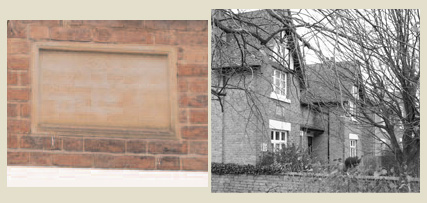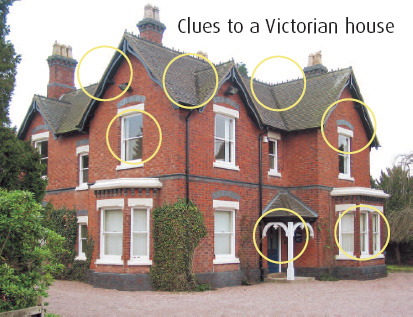‘Neat lawns and pleasure grounds’
This area was where the wealthy families of Rugeley lived in the 18th and
19th centuries. It still retains an atmosphere of elegance and prosperity.
In 1992 the area around Church Street,
near to where you are standing, was
made a Conservation Area because of its
architectural and historic interest.
A 19th-century account described the
houses in this area as being well-built,
and some even elegant, being occupied
by wealthy families and having neat
lawns and pleasure grounds. By the late
1800s much of Church Street looked as
we see it today. These houses now
represent some of the best examples of
domestic architecture in Rugeley.
The gateway to the mediaeval fields
During the Middle Ages, Rugeley had
three common fields. Taylors Lane,
which branches off the middle of Church
Street, once led between one of these
(Churchfield) and the town.
Rugeley Grammar School
Established in 1567, in the reign of Elizabeth I, Rugeley
Grammar School was in Wolseley Road, where the Chancel
Primary School now stands. Among the Grammar School’s
pupils were William Palmer (the Rugeley poisoner) and the
eminent geologist, Thomas George Bonney.
The Bonneys were an influential local family. The Rev.
Thomas Bonney, Thomas George’s father, was headmaster
of Rugeley Grammar School. His brother, Charles, was a
celebrated explorer of Australia. Frederic, one of the
headmaster’s sons, made detailed studies of the lives of
Aboriginal people. He took some of the earliest photographs
of them, and in recognition of this was made a Fellow of
the Royal Anthropological Institute. He retired to Rugeley
and ended his days in The Hollies in Church Street.

This depiction of Rugeley Grammar School by J.C. Buckler dates from 1824.
Courtesy of the Trustees of the William Salt Library, Stafford
Be a house detective
Most of the houses in these
streets are Victorian and a few
are Georgian. When you can
recognise the common features
of each style it becomes much
easier to tell which is which.
 |
Decorative doorway with
pillars and a fanlight above
the door
|
Clues to a Georgian House:
- Paired chimneys
- Parapet round the top,
hiding the slope of the roof
- Smaller windows
near the roof
- Window-panes in
multiples of three
- Simple bands of stonework
to contrast with the brick
- Symmetrical design
No 9 Wolseley Road, on the corner of Church Street, is the oldest building in
the Church Street Conservation Area. It was built in the late 18th century |
 |
Patterns in the brickwork |
Clues to a Victorian House:
- Visible slate roofs
- Pillars and bargeboards
of carved wood
- Ironwork decoration
- Big gables
- Large-paned sash
windows
- Bay windows
- Stained glass in
doorways and windows
- Lack of symmetry
Something old, something new
The Primitive Methodist Chapel dates from
1870 (with the addition of a vestry in 1888).
It cost £200 to build. To the side you can see
some foundation stones. They probably show
who had contributed to the cost.
Look out for the original features and the
modern alterations. What do you think the
original windows might have looked like?

All of these properties are private
and are not accessible to the public

|
Since mediaeval times, homes for the
poor and needy, known as almshouses,
have been founded by wealthy
individuals or charitable groups. Two of
Rugeley’s almshouses can still be seen
within the Church Street Conservation
Area. You can identify them by the
plaques set into the walls.

This plaque was preserved in a new building after the
original almshouses were knocked down. Sarah
Hopkins founded them for four poor women in 1826.
The plaque appears to read:
These almshouses for four poor women and the school[unclear] house were erected and endowed by
Mrs Sarah Hopkins of Stone House A.D. 1826

|
The Sneyd Almshouses are at the junction of
Church Street and Fortescue Lane. The plaque set
into the wall tells us that they were built in
memory of Mr and Mrs Sneyd by their daughters.
The plaque appears to read:
Erected in memory of Mr R. Sneyd of Eaton Lodge
and of S. B. Sneyd his wife by their daughters

The Levett House was founded as a convalescent
home in 1862. A report of 1888 states that it cost
five shillings (25p) a week to look after a patient in
the home. Local people donated gifts to the home:
the Rev. E. Samson gave turkey and sausages, and
some carpet came from Milford Hall. |










